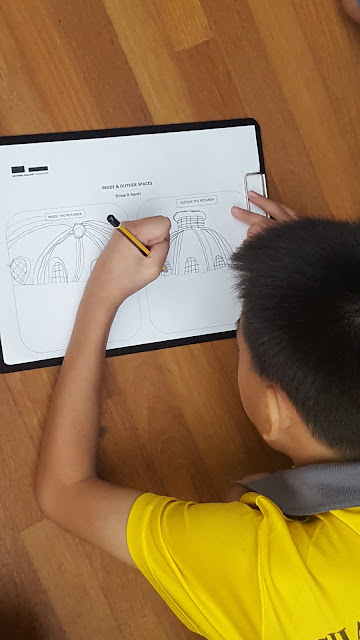
I have just returned from a course in Bali, Indonesia. Many of my friends expressed skepticism when I said that. Given its rich culture and traditions, my friends would be forgiven for holding that thought. Between 4 and 8 Sept 2017, I attended the Green Educator Course (GEC) at Green School (GS).
GS is a sustainable campus on both sides of the Ayung River. The school is designed to operate with alternative energy sources such as hydraulic and solar power. The buildings were made from local bamboo, grown utilising sustainable methods and employed innovatively and experimentally.
I enjoy listening to or experiencing things that challenged my (often unknown) assumptions. So, I wanted to learn about a school in a different context. The great contrast would spur me to find out more about things that I do not know yet. The theme for this course was 'Building Entrepreneurial Communities’. In Singapore, educators would have heard of the word 'entrepreneurial spirit' in relation to education umpteen times, in media or the news.
In Green School, 'Entrepreneurial and Enterprise' is a subject area and a methodology. GS staff managing different aspects of teaching and learning presented to us their expertise and answered our questions to help us learn about GS students' experiential learning. The essential questions addressed are:
- What does it mean to engage with the world and one's own learning in an entrepreneurial fashion?
- How do we add value to the world through our efforts, as part of our learning?
GS, being its 10th year has received much media attention. It didn't just established itself as a 'cool' school that advocate for the environment. John Hardy and his wife, Cynthia are founders of the school and they were inspired by a design concept '3 Springs' written by Alan Wagstaff.
They also believe that bamboo offers an innovative response to the problems faced by contemporary design. In order to be used as building material, bamboo is ready for use in just 3 years, compared to fir tree that needs to grow between 12 to 15 years while an oak needs at least 120 years. Its characteristics such as shape, performance, lightness and strength make it a highly renewable resource.
They also believe that bamboo offers an innovative response to the problems faced by contemporary design. In order to be used as building material, bamboo is ready for use in just 3 years, compared to fir tree that needs to grow between 12 to 15 years while an oak needs at least 120 years. Its characteristics such as shape, performance, lightness and strength make it a highly renewable resource.
In the sustainability model, the environment, the economy and human society are portrayed as concentric, one sphere lying within another. The economy is set within society, and the society is set within the environment. If we destroy the environment, which sustains us and provides our air, water and food, then we will destroy human society. If we destroy human society, we will certainly destroy the economy. Thus, the environment is the most important of the three because without it we have nothing. Based on this assumption, protection of the environment is the best way of sustaining both ourselves and everything else that lives on the earth.
Being aware of environment issues is just the tip of the iceberg. People can choose to take actions or take a back seat. The activities that we do can change a society of passive consumers into a society of active producers (makers). Sustainability combines ecological, social, cultural and economic dimensions which demands integrated understandings and responses. Since it is highly complex, systems thinking and holism are adopted.
GS' focus on sustainability and their interdisciplinary teaching and learning sits very well together because the systemic links between energy consumption, climate change, loss of biodiversity and poverty (World Goals) are national/ international agendas. These issues are evident in media reports and the need for multiple perspectives and integrative approaches are crucial as reflected in many ground-up initiatives.
I was the only Art teacher in the group and it might get you wondering what has my subject area got to with my learning in GEC. There are a wide and diverse set of understandings, discourses and practices around the notion of sustainability. These range from basic issues such as the use and recycling of the materials used in art lessons through to more complex issues such as the role of the art(s) as a tangible means of articulating and disseminating ideas about sustainability. In the midst of an uncertain future, artists often explore narratives of consumption and investigating our relationship with landscape and the environment.
Enough of my ramblings! More photos in my next post!


















